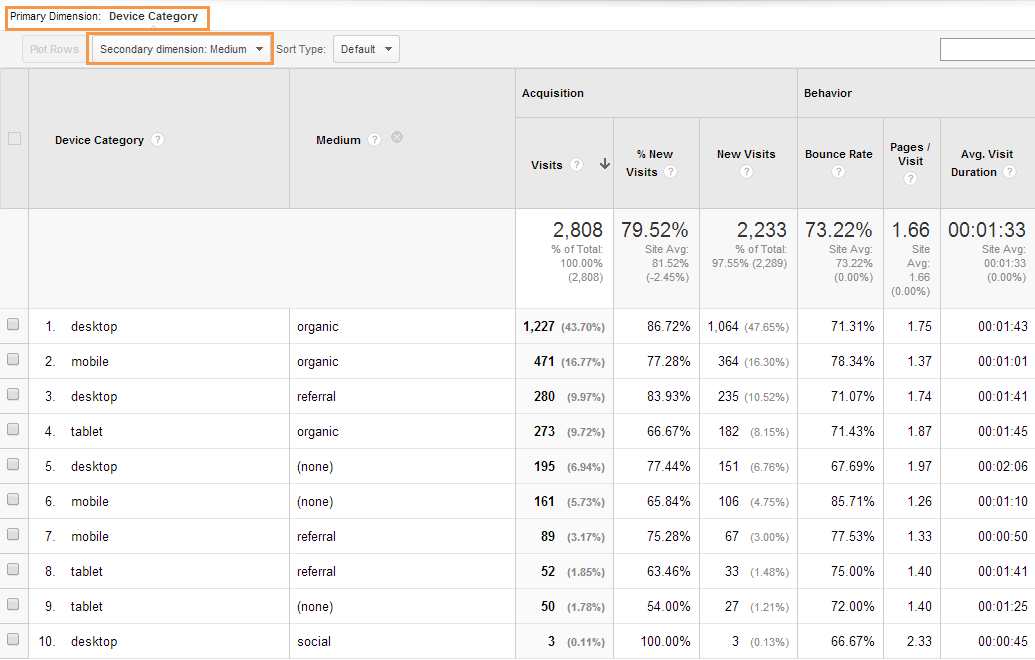Opening the Power of Second Dimension Analytics for Boosted Information Insights and Decision-Making
In the realm of data analytics, main measurements frequently take the spotlight, however real depth of insights lies within the realm of additional measurements. These added data points provide a nuanced point of view that can brighten patterns and partnerships not readily obvious in the beginning look. By harnessing the power of secondary dimension analytics, organizations can unveil covert patterns, discover connections, and essence a lot more purposeful verdicts from their information. The possibility for boosted decision-making via the application of these second measurements is huge, assuring a much deeper understanding of complicated information sets and leading the way for even more enlightened critical selections.
Value of Additional Dimensions
Discovering the relevance of additional dimensions in analytics introduces the covert layers of data understandings vital for informed decision-making in numerous domain names. Second dimensions provide a deeper understanding of key information by using additional context and perspectives. By including additional measurements into analytics, companies can draw out more nuanced and thorough insights from their datasets.
One secret importance of second dimensions is their capacity to segment and categorize key data, permitting a more thorough analysis of details subsets within a dataset. This division enables services to identify patterns, patterns, and outliers that could not appear when looking at the data in its entirety. Second dimensions assist in revealing correlations and dependencies between various variables, leading to even more exact projecting and predictive modeling - secondary dimension.
Additionally, additional measurements play a crucial role in improving data visualization and reporting. By adding second measurements to visualizations, such as graphes or graphs, analysts can create much more helpful and informative depictions of information, promoting better interaction of searchings for to stakeholders. Overall, the integration of secondary measurements in analytics contributes in opening the complete possibility of information and driving evidence-based decision-making.
Secret Advantages of Using Additional Dimensions
Utilizing second dimensions in analytics supplies companies a strategic benefit by enhancing the deepness and granularity of data understandings. By exploring information using second dimensions such as time, place, tool kind, or user demographics, companies can discover patterns, fads, and connections that might otherwise continue to be concealed.
Moreover, the application of secondary measurements enhances the context in which main information is translated. It gives a more thorough view of the connections in between different variables, allowing companies to make informed choices based upon a more alternative understanding of their information. Additionally, additional measurements facilitate the identification of outliers, abnormalities, and locations for optimization, ultimately causing extra effective methods and boosted outcomes. By leveraging additional measurements in analytics, companies can harness the complete potential of their data to drive much better decision-making and attain their organization objectives.
Advanced Data Analysis Methods
A deep dive into sophisticated information analysis methods exposes advanced techniques for drawing out useful understandings from complicated datasets. One such method is artificial intelligence, where formulas are utilized to determine patterns within data, predict outcomes, and make data-driven decisions. This method permits the automation of logical version structure, allowing the processing of large quantities of information at a quicker speed than conventional methods.
Another innovative strategy is anticipating analytics, which utilizes statistical formulas and artificial intelligence methods to forecast future end results based upon historical information. By assessing fads and patterns, companies can anticipate consumer habits, market trends, and possible dangers, empowering them to make aggressive choices.
Additionally, message mining and belief analysis are valuable strategies for drawing out understandings from unstructured data resources such as social media remarks, client reviews, and study reactions. By assessing text information, organizations can recognize client opinions, determine emerging patterns, and enhance their services or items based on responses.
Enhancing Decision-Making Through Secondary Dimensions

Enhancing decision-making via secondary dimensions allows businesses to make more notified and targeted critical choices. As an example, by segmenting consumer information based on secondary dimensions like buying background or engagement levels, business can tailor their advertising and marketing strategies to particular audience sections, bring about boosted conversion rates and customer complete satisfaction. In addition, second measurements can aid recognize relationships and partnerships in between various variables, allowing organizations to make data-driven decisions that drive growth and profitability.
Implementing Secondary Measurement Analytics
When integrating secondary measurements in analytics, organizations can open deeper understandings that drive strategic decision-making and boost overall efficiency. This entails recognizing the specific inquiries the organization looks for to address and the data factors required to resolve them.

Moreover, companies ought to utilize advanced analytics tools and innovations to streamline the process of integrating second dimensions. These tools can automate data handling, evaluation, and visualization, allowing organizations to concentrate on analyzing understandings instead than manual data control.
Verdict
In conclusion, additional measurement analytics play a critical role in enhancing data understandings and decision-making procedures. By making use of innovative data analysis techniques and executing additional measurements properly, companies can open the power of their data to drive strategic company decisions. The crucial benefits of using additional measurements can not be overemphasized, as they give a deeper understanding see this site of data trends and relationships. It is vital for companies to take advantage of additional measurement analytics to stay competitive in today's data-driven landscape.
In the realm of information analytics, key dimensions typically take the spotlight, yet the real depth of insights exists within the realm of secondary measurements.Making use of additional dimensions in analytics supplies companies a tactical benefit by increasing the depth and granularity of data understandings. By leveraging secondary measurements in analytics, companies can harness the full possibility of their data to drive better decision-making and attain their service objectives.
Applying data recognition processes and regular audits can assist maintain information quality and integrity.
By using advanced data evaluation methods and implementing additional dimensions successfully, organizations can unlock the click now power of their information to drive tactical organization decisions.